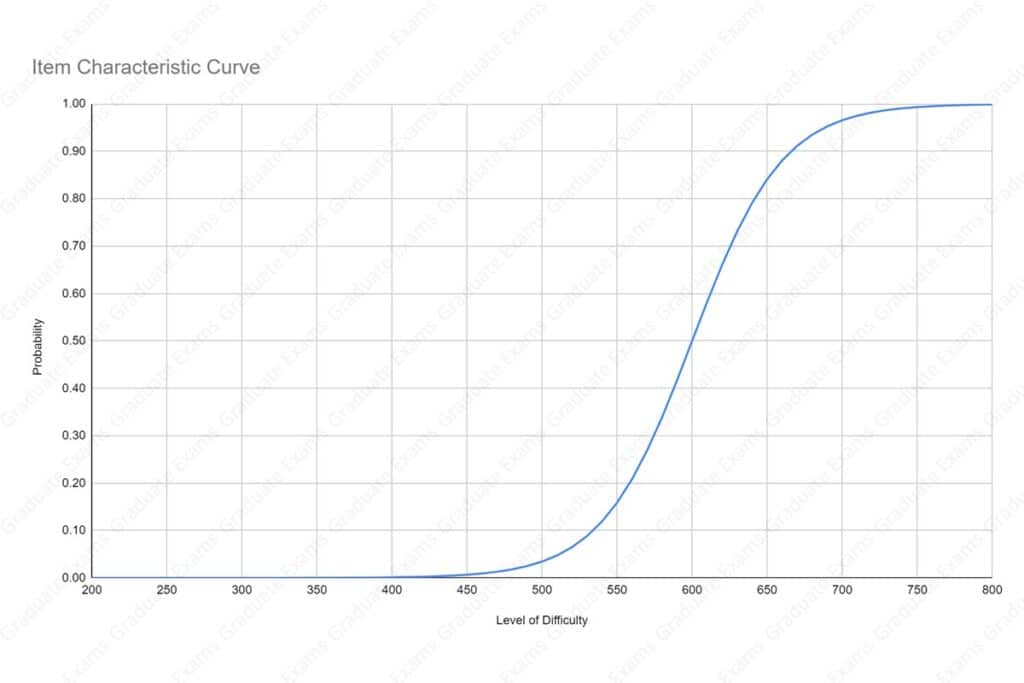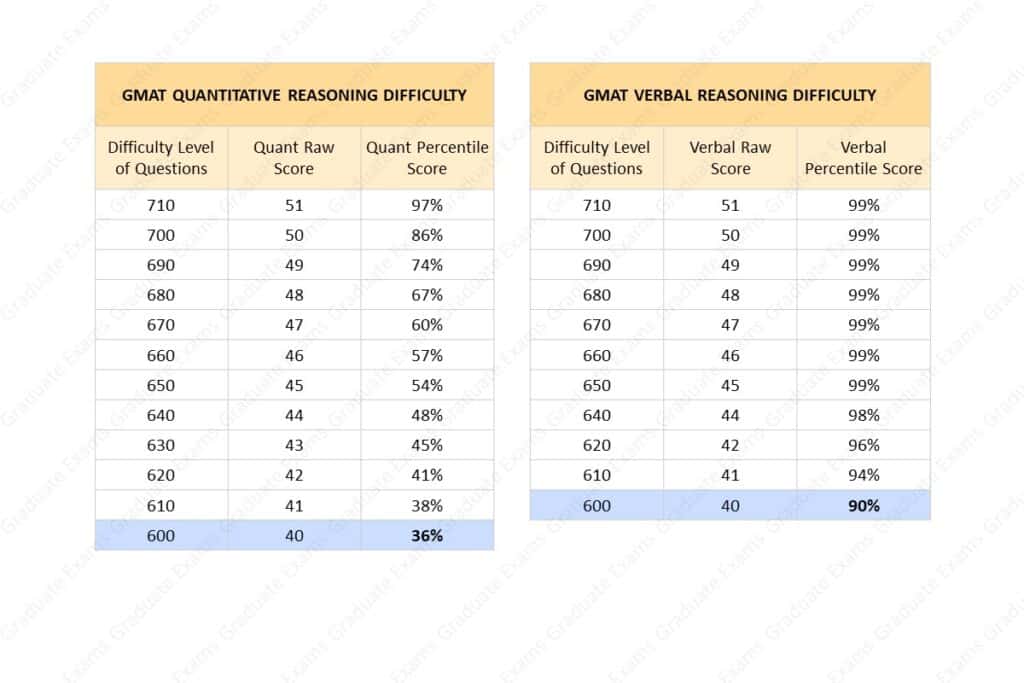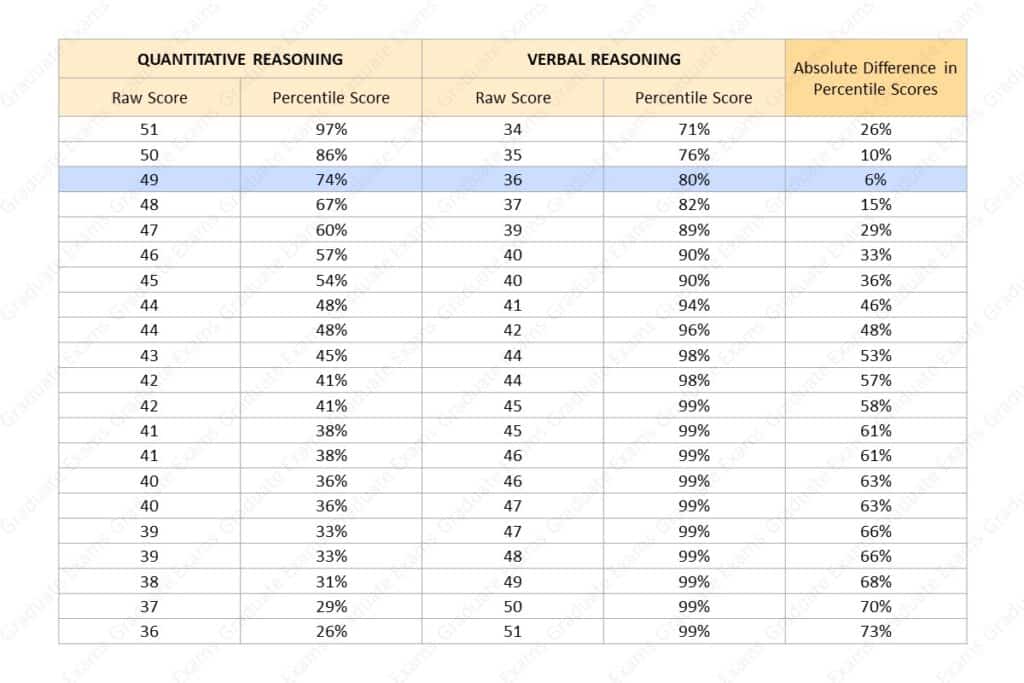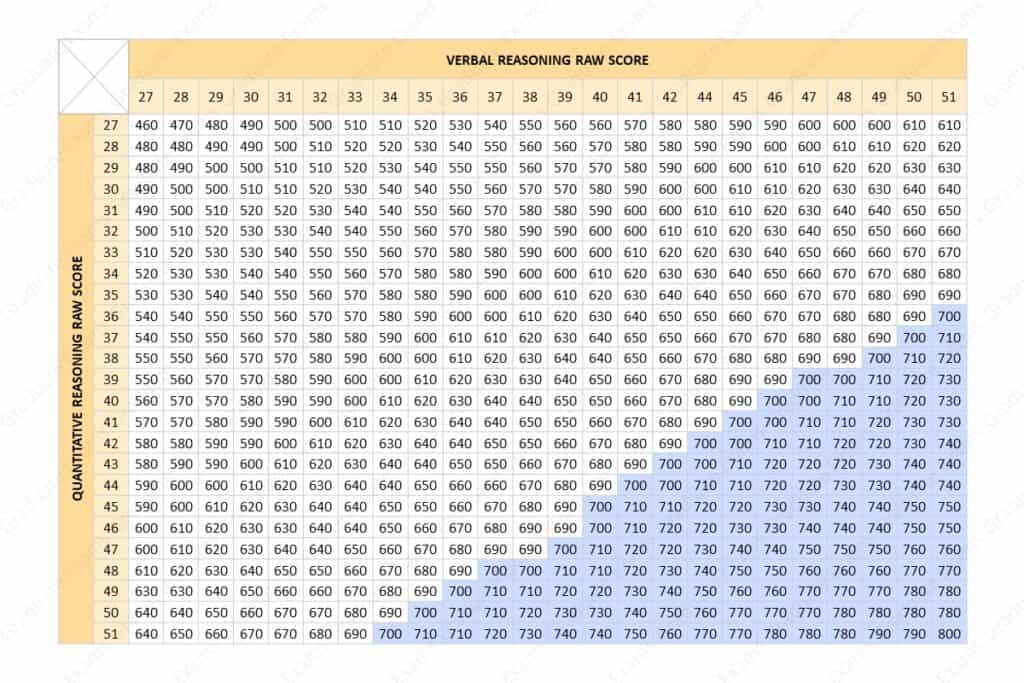You’ve found out that GMAT has a quantitative reasoning section. And you’re wondering – “Is GMAT quant difficult?” I wrote this article to answer your question – and I have proof.
Typically, GMAT quant is easier than GMAT verbal. Only 10% of test takers answer questions harder than level 600 in the verbal reasoning section. But 64% of test takers answer questions harder than level 600 in the quantitative reasoning section.
Continue reading to find out what is a good score in GMAT quant.
In general, a GMAT quant score above 50 is a good score. This score puts you ahead of 86% of test takers in the quantitative reasoning section. A 50+ score also creates 14 possibilities for a GMAT 700+ score where the difference between the quant and verbal percentile scores is less than 5 points.
In the rest of the article, I discuss the data behind these answers and share some tips on how to prepare for GMAT quant – especially the harder and the hardest GMAT math questions.
However, you may also have some more general questions. Why is the GMAT so hard? How hard is the GMAT? So, I wrote an article explaining how hard is it to get 700 on GMAT. I recommend you read the article for a clear explanation on what it takes to get 700 on GMAT.
The information in the article comes from my experience of improving my GMAT quant percentile score from 63 to 78 – and then from 78 to 98. Having improved my GMAT quant percentile score by 35 percentile points, I have a deep understanding of GMAT quant difficult level.
Data Driven Proof Reveals – Is GMAT Quant Difficult?
But before we compare the difficulty of the quantitative reasoning section with the verbal reasoning section, let’s take a little time to learn how GMAT assigns difficulty levels to questions.
Interpreting GMAT Difficulty Level
Every GMAT question begins as an experimental question. Up to 20% of the questions on GMAT are experimental questions.
Experimental questions don’t affect the score. Instead, experimental questions help GMAT gather data from test takers.
Using the data, the makers of GMAT draw the item characteristic curve or ICC for the questions.
The item characteristic curve is a graph in which the horizontal axis marks all possible total scores. On GMAT the total score begins at 200 and increases to 800 in increments of 10. The vertical axis marks the probability of answering questions correctly for each possible score.
Here’s an example of an item characteristic curve.

From the curve in the figure above, you can see that people who scored below 450 on GMAT have 0% probability of answering the question correctly. And people who scored above 750 on GMAT have 100% probability of answering the question correctly.
But according to item response theory, the difficulty level of a question is the score at which the test takers have a 50% probability of answering the question correctly. In this example, the 50% probability corresponds to a difficulty level of 600.

Thus, the difficulty level of the question is 600.
Now that you know how GMAT assigns a difficulty level to a question, let’s compare quant and verbal scores.
GMAT Quant vs Verbal Scores Comparison
We’ve discussed how GMAT assigns a difficulty level of each question. But we haven’t talked about how GMAT calculates the score for each section.
Well, GMAT’s algorithm is designed to find the difficulty level at which the test taker can maintain an accuracy of 60%. Therefore, if you get a score of 45 in the quantitative reasoning section, it means that the algorithm estimates that you can can maintain an accuracy of 60% for level-650 questions.
Comparison by Difficulty Level of Questions

In the figure above, you can see in the table on the left that only 36% of test takers fail to answer level-600 questions in the quantitative reasoning section. In other words, 64% of test takers can maintain an accuracy of 60% for level-600 questions in the quantitative reasoning section.
Now, In the table on the right, you can see that 90% of test takers fail to answer level-600 questions in the verbal reasoning section. This means that only 10% of test takers can maintain an accuracy of 60% for level-600 questions in the verbal reasoning section.
For the same difficulty level of questions, the number of test takers who answer the question correctly in the quantitative reasoning section is 6 times higher than the number of test takers who answer the question correctly in the verbal reasoning section.
Now, let’s look at another data point.
Comparison by Percentile Scores

In the two tables in the figure above, I’ve compared the difficulty level of questions in the quant and verbal section for comparable percentile scores.
As you can see, 67% of the people can maintain an accuracy of 60% for level-680 questions. However, a comparable number of people (66%) can maintain an accuracy of 60% for level-520 questions.
For the same number of test takers, the level of difficulty at which they maintain 60% accuracy is significantly higher in the quantitative reasoning section than in the verbal reasoning section.
What is a Good Score in GMAT Quant?
A score above 50 in GMAT quant is a good score. Before we dive into the reason for this, let’s understand what we mean by the quant-verbal split.
GMAT Quant Verbal Score Splits
A combination of a quantitative raw score and verbal raw score leading to a total score is known as the quant-verbal split for that total score. Here are all the possible quant-verbal splits for a GMAT 700 score.

From the information in the table, you can see that a quant-verbal split of 36-51 can get you a GMAT 700 score even with a quant score in the 26th percentile.
However, in this case, the difference between the percentile scores of the quant and verbal section is 73 percentile points. This difference is too high! Business schools may devalue a GMAT 700 score if the gap between the percentiles scores in the two sections is this larger.
So, among these splits, which is the best quant-verbal split?
The best quant-verbal split is the one that minimized the difference between the quant and verbal percentile score. For a GMAT 700 score, the difference is the lowest for a quant-verbal split of 49-36. You can see the split marked in blue in the table above.
Benefits of Scoring 50+ in GMAT Quant
In total there are around 147 quant-verbal splits for getting a GMAT 700+ score. Here’s a snapshot of those possibilities:

But among these quant-verbal splits only 14 splits have a difference less than 5 percentile points between the quant and verbal percentile scores. Here they are:

As you can see from the table above, for all the best quant-verbal splits for a GMAT 700+ score, you need a score above 50 in the quantitative reasoning section.
Next Steps
If you’re aiming for a 700+ score, I recommend reading the following articles:
- How to Score a 700 on the GMAT (21 Awesome Tips)
- How to Start GMAT Preparation from Scratch (Ultimate Guide 2021)
- How to Score 51 in GMAT Quant (21 Field-Tested Tips)
- How to Prepare for GMAT Verbal (21 Awesome Tips)
Get in Touch
If you need my help with your GMAT preparation, you can get in touch with me via email. Here’s my email ID:
ask@graduateexams.com
I look forward to help you on your journey for a GMAT 700+ score. All the best.
Sources
Percentile Data: What Your GMAT Percentile Ranking Means
Quant-Verbal Split Data: Manhattan Prep GMAT Score Calculator
Image Credits
Featured Image: Computer vector created by pch.vector – www.freepik.com
